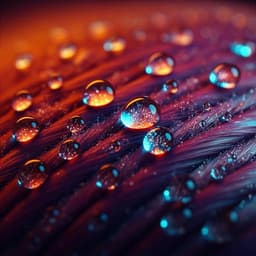
Engineering and Technology
Interface engineering breaks both stability and activity limits of RuO₂ for sustainable water oxidation
K. Du, L. Zhang, et al.
Discover a breakthrough in electrochemical energy as researchers Kun Du, Lifu Zhang, Jieqiong Shan, Jiaxin Guo, Jing Mao, Chueh-Cheng Yang, Chia-Hsin Wang, Zhenpeng Hu, and Tao Ling unveil a RuO₂/CoOₓ interface that enhances both stability and activity for oxygen evolution reaction, surpassing previous limits and paving the way for sustainable hydrogen production.
~3 min • Beginner • English
Related Publications
Explore these studies to deepen your understanding of the subject.







